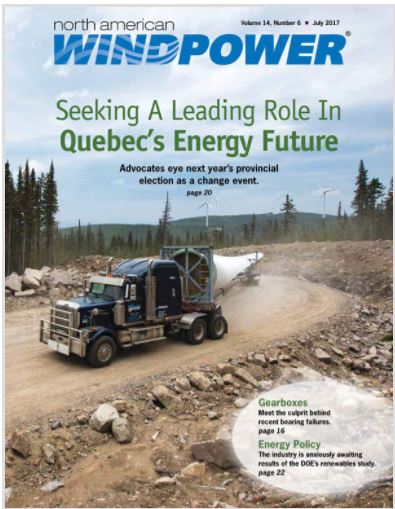Wind turbine gearboxes are designed to last 20 years. However, wind operators often  experience gearbox failure rates of up to 50% across the lifetime of their fleets. If component fatigue, fretting or wear is caught early enough, an operator can mitigate consequential damage and prevent catastrophic gearbox failure. If the window of prevention is missed, however, the operator can incur costly repairs between $200,000-$500,000 for just the gearbox system. This includes a minimum of two weeks of lost revenue from asset downtime, the cost of the gearbox replacement, and additional crane and labor costs.
experience gearbox failure rates of up to 50% across the lifetime of their fleets. If component fatigue, fretting or wear is caught early enough, an operator can mitigate consequential damage and prevent catastrophic gearbox failure. If the window of prevention is missed, however, the operator can incur costly repairs between $200,000-$500,000 for just the gearbox system. This includes a minimum of two weeks of lost revenue from asset downtime, the cost of the gearbox replacement, and additional crane and labor costs.
As the wind industry grows and prospers, operators are investing in software solutions, in addition to their condition-based monitoring systems, to predict component failures early and prevent major gearbox failures. These investments help them move from corrective maintenance practices to predictive health maintenance.
Bearings cause approximately 64% of all gearbox failures, according to the National Renewable Energy Laboratory’s gearbox failure database. Of the 16-22 bearings, depending on gearbox type and configuration, operated in a standard 1.5 MW-rated machine, the highest number of failures are observed in the high-speed shaft (HSS) and high-speed intermediate shaft (HSIS) bearings due to axial cracking and spalling.
If an operator has the data to know which bearing assembly is running with damage, life extension of the gearbox can be achieved through early component replacement, a physics-based derate to reduce the load on the gearbox, a lubrication exchange, or the use of lubricant additives.
For example, the replacement cost of an HSS bearing is approximately $25,000. Action taken to save or replace the HSS assembly can result in a $60,000 savings by preventing secondary damage in the HSIS pinion assembly. If there is damage in the HSIS bearing assembly, secondary component risk is placed on the low-speed shaft (LSS), HSIS gear and the planetary system. Damage to the LSS and planetary systems can cost over $100,000 each. At this stage, the operator needs to evaluate if an up-tower component replacement could save the gearbox or if a physics-based derating of the turbine could slow down the damage, thereby optimizing the timing of the gearbox replacement.
White etch cracking (WEC) is another cause of premature failures in rolling element bearings, occurring as early as 1% to 50% of the calculated L10 life. Unfortunately, WEC has been found in bearing applications, with operating conditions having no common denominator. The tribological drivers for WEC formation are also contested.
Microstructural alterations in the vicinity of inclusions are often observed, which serve as crack nuclei that initiate microstructural alterations commonly referred to as butterfly wings. WEC formation is not always accompanied by butterfly wing formations, though. In these instances, they are called irregular WECs, which makes finding the root cause on them challenging.
